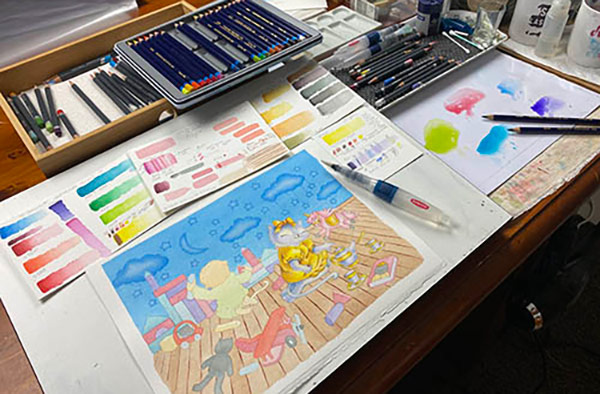Here’s your fourth question (in a series of five).
You’re on holiday, it’s a lovely summer day and you’ve decided to leave the mobile phone at home, turn off the TV and radio and put away all the clocks in the holiday apartment. You fall into a relaxed holiday doze and then wake up some time later in the afternoon. It’s just starting to get dark outside.
How accurately do you think you would be able to guess the time?
(a) Within an hour
(b) Within 3 hours
(c) I wouldn’t have a clue
The above question illustrates your natural gift of light and dark comparison.
You can guess what time of the morning or afternoon it is just by how light or dark it is outside. You can do this because you have the natural gift to be able to compare different levels of light and dark. In drawing of course this relates to the light and dark within an artwork, known as tonal contrast.
When you look outside as it starts to get darker in the afternoon you automatically judge the levels of light and shade in the environment and make a judgement about the time.
If you answered (a) for this question you might find that you are quite confident when it comes time to studying light and shade as you develop your drawing skills.
If you answered (b) or (c) then have a go at actually turning off the television & radio, hiding your clocks and mobile phones for a weekend, so you don’t know what the exact time is.
Try and guess the time during the day by the watching the quality of the daylight outside. It’s a refreshing experience and you’ll notice subtle tonal contrasts that you probably haven’t noticed before. You will soon find that you are more accurate than you think and that you do indeed have the natural gift of light and dark comparison.
Again, with practice you can develop this natural skill for the purposes of drawing with the right exercises. Before you know it you will be noticing light and shade like a pro!












Trackbacks/Pingbacks